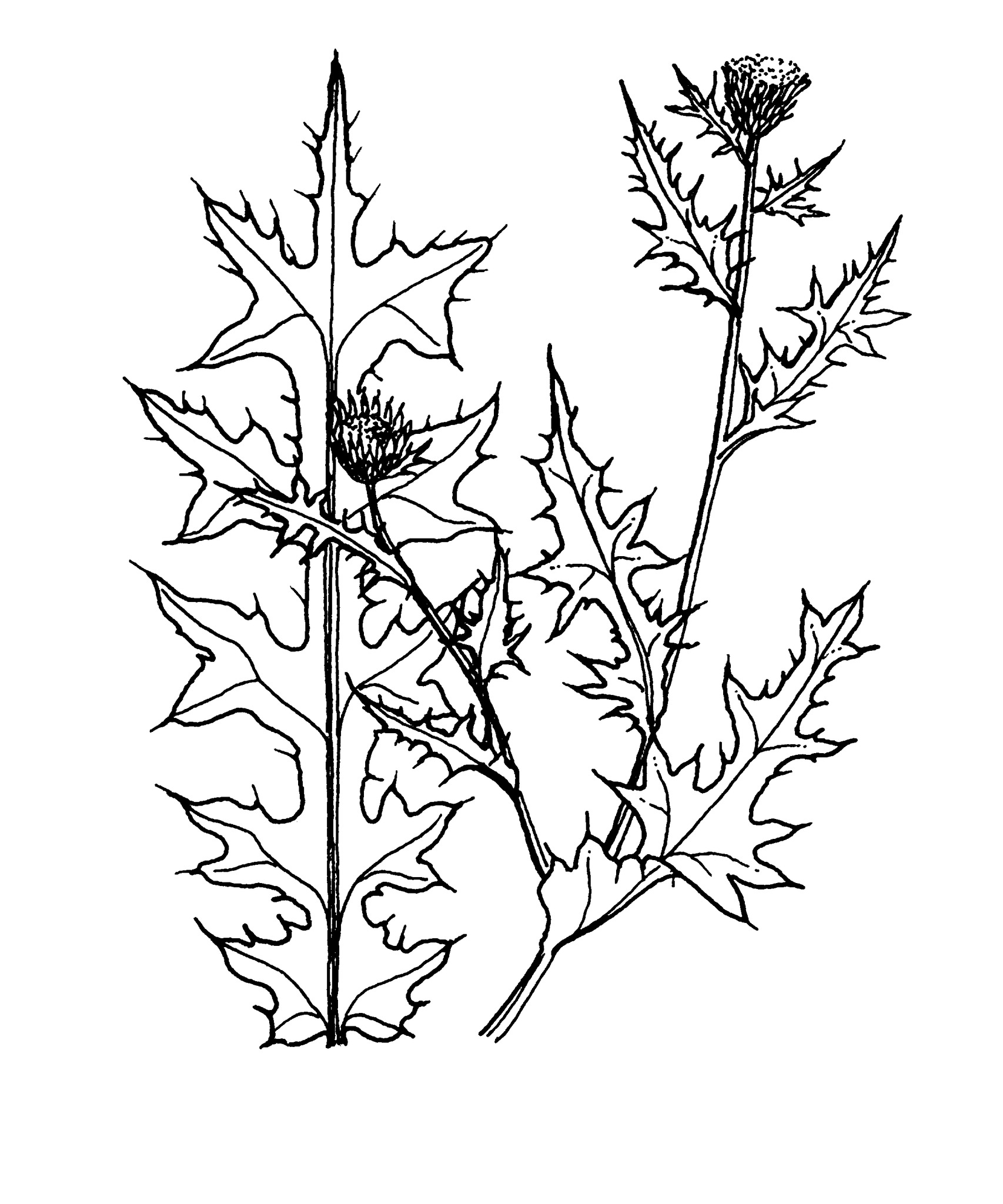
Greek kirsos — swollen vein, an apparent allusion to the effect when pricked by the spines.
Annual, biennial or perennial herbs, spiny, usually hairy. Stems erect or ascending, sometimes with spiny wings. Leaves basal and/or along stems, alternate, margins entire to divided. Capitula diskoid, terminal, solitary or in clusters, with or without stalks. Involucral bracts in many rows, overlapping, unequal, spine-tipped. Receptacle with bristles, flat to convex. Florets bisexual, tubular (rarely unisexual), red, purple, pink, yellow or white. Achenes obovate or oblong, compressed, with ring of tissue at apex, glabrous. Pappus of many feathery bristles, usually deciduous as a unit.
Four species have become naturalised in Australia and all are noxious weeds. Although many species make attractive garden plants, they should be avoided as they have the potential to become troublesome weeds. Always remove and destroy capitula before mature achenes are shed.
Very spiny plants; achene glabrous; pappus of feathery bristles shed as a unit.
About 250 species from Europe, Asia, N and E Africa and N America.
Source: (2002). Asteraceae. In: . Horticultural Flora of South-eastern Australia. Volume 4. Flowering plants. Dicotyledons. Part 3. The identification of garden and cultivated plants. University of New South Wales Press.
